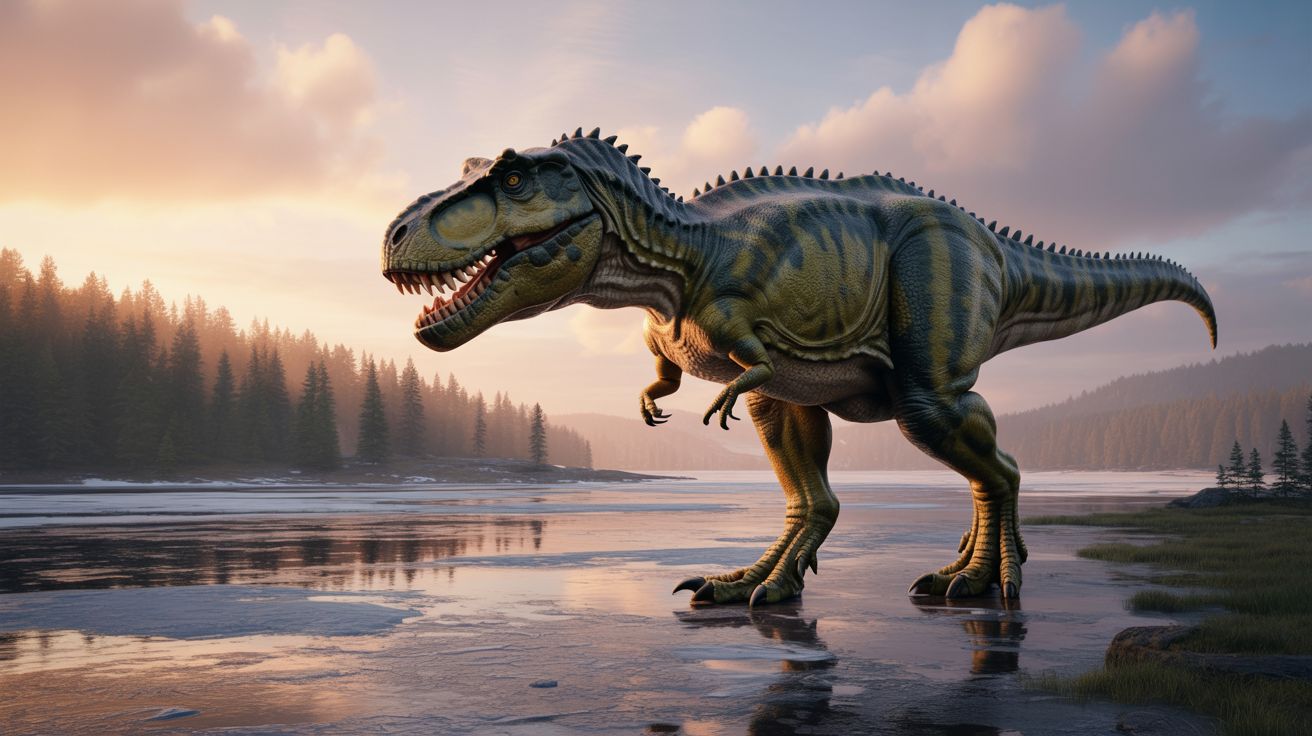T. rex's ancestors might actually come from Asia 🦖
Published by Cédric,
Article author: Cédric DEPOND
Source: Royal Society Open Science
Other Languages: FR, DE, ES, PT
Article author: Cédric DEPOND
Source: Royal Society Open Science
Other Languages: FR, DE, ES, PT
Follow us on Google News (click on ☆)

This research, conducted by an international team, reveals that the T. rex had Asian roots before establishing itself in North America. Scientists reconstructed this evolutionary saga by combining fossils, climate models, and phylogenetic analyses, offering a glimpse into the ecological dynamics of the Cretaceous.
A transcontinental migration
The tyrannosaurids, the family of T. rex, may have crossed the Bering Strait over 70 million years ago. This land bridge, then temperate, connected Asia to North America. The models suggest a close kinship between T. rex and Asian species like the Tarbosaurus.
Despite the abundance of North American fossils, the missing link might be hidden in Asia. Paleontologists point out that apex predators, being fewer in number, leave fewer traces. This scarcity complicates reconstructing their history, but statistical tools partially compensate for these gaps.
The study also challenges the hypothesis of a direct North American origin. A fossil from New Mexico, initially attributed to a T. rex ancestor, may be misdated. The authors favor a local evolution in Laramidia, an ancient western region of present-day North America.
Climate and gigantism: an indirect correlation
The Late Cretaceous experienced global cooling after a thermal peak 92 million years ago. This transition coincides with the rise of tyrannosaurids and megaraptors, two lineages of giant predators. Yet, the link between temperature and size remains tenuous.
The disappearance of carcharodontosaurids, direct competitors, may have freed ecological niches. Tyrannosaurs and megaraptors, better adapted to cold, could have taken advantage of this void. Their gigantism might reflect a response to the increased availability of massive prey like Triceratops.
This North American conquest made T. rex one of the last great theropods of the Cretaceous. Its evolutionary success illustrates how migrations and adaptations can shape a species' destiny, turning it into an iconic predator.